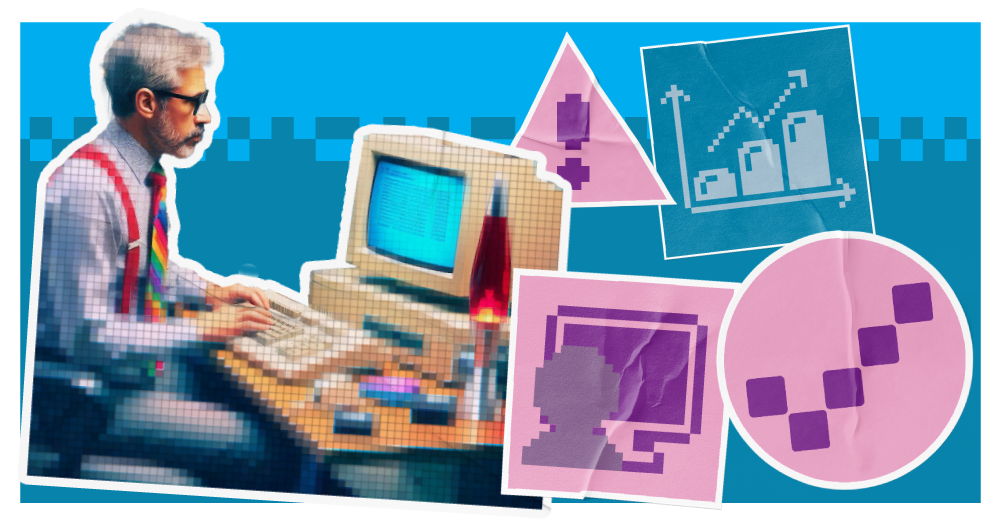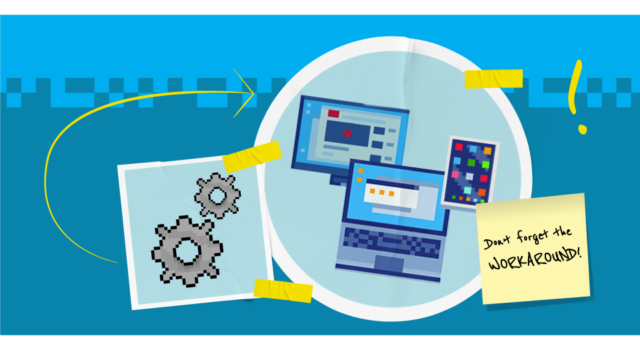In an increasingly digital and technological world, robust IT processes are the lifeblood of a high-performing business. Any form of disruption can prevent a business from operating, leading to knock-on effects for productivity, costs and customer service.
Having strong processes can help you to prevent disruption, manage risk, improve efficiency and ensure compliance to industry standards.
ITIL is a framework designed to help businesses improve their IT operations, whether through an internal team or third-party service provider. Using its principles, you can align your IT to your long-term business vision and better deliver change management.
In this blog, we explore the principles of ITIL in more detail and how they can drive performance across your business.
What is ITIL?
ITIL (Information Technology Infrastructure Library) is a set of best practices for managing and improving IT services. It’s a framework that helps businesses align their IT services with their overall business goals and objectives, while unlocking improved value.
ITIL is widely applicable when managing IT services, but it’s particularly relevant for businesses that:
- Have complex IT infrastructures: Businesses with large, diverse or distributed IT environments can benefit from ITIL’s structured approach.
- Need to comply with industry regulations: ITIL can help businesses meet compliance requirements, which may be mandatory for certain industries.
- Want to improve customer satisfaction: ITIL’s focus on customer-centric IT service management can help businesses enhance customer satisfaction and loyalty.
- Want to reduce costs: ITIL can help businesses optimise their IT operations, reduce costs and improve efficiency.
- Are undergoing change: ITIL can provides a structured approach to project management, ensuring that changes are implemented in a controlled and co-ordinated manner.
There are several key features that differentiate ITIL from other frameworks. These include:
- Service lifecycle management: ITIL focuses on managing IT services throughout their entire lifecycle, from strategy and design to operation and improvement, for an end-to-end process.
- Process-oriented approach: It promotes a structured and process-driven approach to IT service management, ensuring consistency and efficiency.
- Customer-centric focus: ITIL emphasises the importance of understanding and meeting the needs of IT service users, both internally and externally.
- Continuous improvement: It encourages businesses to constantly review and improve their IT service management practices to deliver better results.
By leveraging ITIL principles, you can implement robust processes that allow you to get greater value from your IT and ensure consistent performance.
How does ITIL benefit business?
ITIL drives significant benefits to any business that uses IT. In the modern age, that means almost everyone.
The benefits include:
- Improved IT service quality: ITIL focuses on providing consistent, reliable and high-quality IT services. This can lead to increased user satisfaction across IT services and reduced operational disruption.
- Increased efficiency and cost-effectiveness: ITIL promotes process standardisation and optimisation, which can help businesses streamline their IT operations and reduce costs.
- Better alignment with objectives: ITIL ensures that IT services are aligned with the overall business strategy, enabling IT to contribute effectively to long-term goals.
- Enhanced risk management: ITIL provides a framework for identifying and managing risks associated with IT services, which can minimise disruptions and protect business operations.
- Improved compliance: ITIL can help businesses comply with industry regulations and standards, such as ISO 20000, with careful planning and improvement of IT services.
- Improved governance: ITIL provides a structured approach to IT governance, ensuring that IT decisions are made effectively and in the best interests of the business.
- Enhanced innovation: ITIL encourages continuous improvement and innovation, allowing businesses to adapt to changing technologies and market demands with ease.
What are the stages of ITIL?
There are five core stages of ITIL, covering the entire service lifecycle. which shape your IT services and their efficiency.
- Service strategy: Firstly, you’ll define your overall IT service strategy, aligning it with business objectives and identifying the services needed. During this stage, you need to think about how IT can help you achieve your goals. This will enable you to accurately implement those services and allocate resources. You’ll also want to consider any risks and how you’ll overcome them.
- Service design: This stage focuses on designing your IT services, including architecture, processes and policies, to meet the defined requirements. Remember your goals throughout this stage, with an emphasis on designing a service that provides evergreen value and competitive advantages.
- Service transition: This stage involves planning and implementing the transition from the design phase to operational readiness. You will want to ensure it fits all business requirements, with available resources to effectively make changes.
- Service operation: This involves the day-to-day operation of IT services, including incident management, problem management and change management. It focuses on helping end users to work productively, using the IT services available, and addressing any issues as they emerge.
- Continual service improvement: This final stage involves evaluating and improving IT service management practices to ensure ongoing alignment with business needs and customer satisfaction. It will also ensure you continually meet compliance requirements.
You’ll need to follow every stage of the lifecycle to obtain the highest quality of service, aligned to your business needs.
What are the principles of ITIL?
There are many principles that ITIL comprises. By following each, your IT service will work harder for your business, allowing you to get long-term results.
There are many principles that ITIL comprises. By following each, your IT service will work harder for your business, allowing you to get long-term results.
1. Focus on value
The aim of your IT services should be to provide business value. This could be by enabling you to operate every day, encouraging innovation, helping you to serve customers, protecting you against cyber attacks or address upcoming challenges.
At every stage of your service lifecycle, ask how you can ensure value for your staff, customers and business. This will help you to better align IT services to your key objectives.
2. Start where you are
ITIL focuses on improving IT provision. Due to this, it’s crucial to assess the state of your existing IT services and any strengths or weaknesses.
Spend time analysing your IT to gather data and determine where you’d like to improve. This will help you to shape your goals and focus on the areas that are genuinely holding you back.
3. Progress iteratively
A phased approach is best when implementing or changing processes or infrastructure in your business. If you do too much at once, you’ll face burn-out and difficulty in measuring impact.
Prioritise the most important changes and focus on those first. Then, gain feedback from end users or data insights to understand the impact. This will then form your future steps.
This leads to an iterative cycle when you constantly improve but without overwhelming your business.
4. Collaborate
Projects work best when teams are aligned. It’s crucial your IT management fits into the needs of the wider business, which means there needs to be open communication between both sides.
When approaching an IT project, aim to get all key stakeholders involved. Discuss the project transparently and give both sides a chance to share their thoughts. This open communication should continue through the lifecycle of your IT services, so everyone is aligned to the process and knows what’s happening.
5. Think holistically
A holistic approach considers the entire IT service lifecycle, from design to retirement. It looks at the bigger picture of a project, allowing careful planning that makes it more sustainable.
As part of this, you’ll need to think about wider business operations and whether they’ll be disrupted by any change you plan. You’ll also need to think long-term about anticipated needs or seasonal trends which may affect your IT services.
By thinking holistically, you can better plan and navigate obstacles before they happen for continuous performance.
6. Keep it simple
While IT services can be highly technical, your approach should be simple. There is a risk of overcomplicating things, but this can make processes harder to follow and lead to headaches later.
When considering IT solutions to issues, focus on the most practical route you can take, both for the business and customers, and avoid unnecessary complications. By doing so, you can implement changes more smoothly while still securing results.
7. Optimise and automate
Many businesses currently face IT skills gaps which can hamper progress. However, automation is a crucial tool to overcoming this issue.
Continuously seek ways to improve efficiency and reduce manual effort through automation. While we recommend designing services manually first to ensure they are working, you can then begin to identify opportunities for optimisation to streamline processes further.
This encourages consistency and accuracy across your IT, while saving your teams precious time to devote to value-adding work.
What is the role of ITIL at Infinity Group?
ITIL is a robust framework that drives IT performance and effective change management. However, when many businesses face limited resource, it can be difficult to implement ITIL yourself.
In these instances, managed IT services can be a lifeline. They place your IT operations into the hands of third-party experts who can either manage your entire needs or augment the skills of your existing IT teams.
You naturally want to ensure any IT service provider offers consistent performance, continuous improvement and value for money.
At Infinity Group, we use ITIL to ensure the services we provide your business are aligned to your goals and deliver high-quality support. By using ITIL principles, we can:
- Standardise service delivery: ITIL provides a framework of best practices that we use to ensure consistency and quality in our service delivery. This helps us to identify your specific needs and create an aligned offering.
- Manage risks: By considering the entire service lifecycle, ITIL supports effective risk management. We can then identify and mitigate these across your IT operations, allowing your business to operate safely and continuously.
- Improve efficiency: We take a process-orientated approach to our IT services, ensuring the support we provide you ticks every requirement and leaves no room for error.
- Enhance customer satisfaction: ITIL emphasises customer-centric service delivery, which we embody in everything we do. At the start of our partnership, we’ll spend time understanding your needs so we can ensure expectations are always met.
- Improve compliance: As we discuss your business objectives, we’ll also learn the compliance requirements you need to meet, alongside our experience with industry regulations. This allows us to take proactive measures to ensure any risk is minimised and strengthen your IT security and reliability.
- Scale: Using ITIL’s focus on service lifecycle management, we can scale services as your business evolves, offering evergreen results and budget-friendly evolution.
- Continuously improve: ITIL promotes a culture of continuous improvement. We constantly strive for ways to enhance our IT services and deliver more value to the business. We’ll spend time monitoring your performance to suggest improvements and make positive changes.
About our market-leading managed IT services_
Our managed services are designed with ITIL principles at heart. Our priority is leveraging our expertise to provide valuable support for business, promoting robust security, reliable performance and agility.
By utilising these services, you can align your IT strategy closely with your goals, while improving cost-efficiency.
Our IT services are also:
- Quick, with an average call response time of one minute
- Compliant with ISO 27001, 9001 and 14001
- Cyber Essentials+ certified
- Backed by a 96% customer satisfaction rate
How much is your IT costing you?
ITIL is a framework designed to lower your IT costs through effective management. This is particularly crucial at a time where many businesses face rising costs and will be actively seeking to reduce overheads.
If you’ve ever wondered how much your IT is costing you, we’ve built a total cost of ownership calculator. Simply answer a few questions about your IT setup and you’ve get a rough cost of how much you’re spending on it. This can help you to better understand your costs, and find ways to reduce them through outsourcing and streamlining.
Find out your total cost of ownership here.




